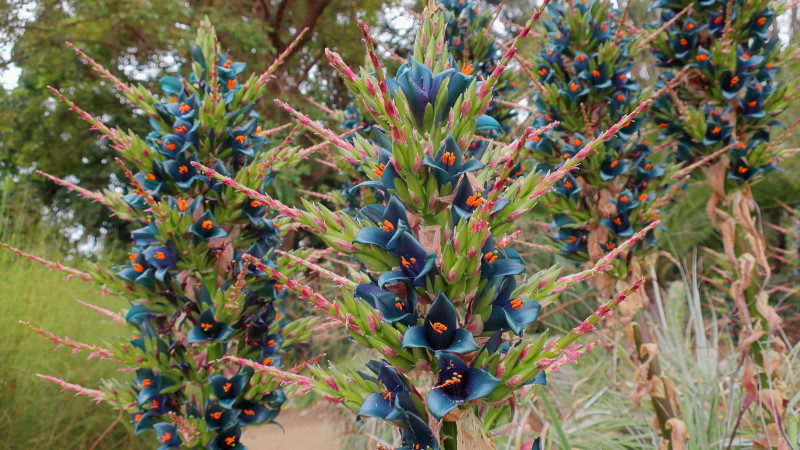
Sapphire Tower Facts
- First of all, the stunningly beautiful Sapphire Tower conceals a secret that might surprise you. That’s because this fabulous plant actually ranks as a member of the bromeliad Family. In total, 3,475 species of plants share membership in this group. Therefore, it actually bears a genetic relationship with, among other plants, the pineapple.
- However, this amazing plant fits into several distinct categories, which makes for yet another surprise. It not only qualifies as a bromelaid, but also fits into two other categories as well. That’s because it also lists as both a cactus and a succulent. Due to the strictures of classification, all cacti remain succulents, but not all succulents are cacti.
- Finally, detailed information about this marvelous species in its natural habitat remains scarce. For the moment, it appears to have a moderate population, inhabiting a very specific area. Currently, the IUCN has no listing for the species. But, given these factors, it can be assumed to be at moderate risk due to such factors as climate change.
Related Articles
Sapphire Tower Physical Description
Unquestionably, the breathtaking Sapphire Tower truly stands out from most related species. It also stands up, given that it has a strongly vertical shape. The gorgeous succulent attains a maximum height of roughly 5 ft (1.52 m). However, most specimens in the wild average about 3 ft (1 m).
Its highly thickened stalk boasts a surprising number of recurving leaves. This foliage typically displays a unique combination of colors. That’s because the upper part shows a light green, while the underside shows a striking silver-gray hue. These average 18 – 24 in (46 – 61 cm) in length and grow thinner toward the tips.
Yet, its most notable feature remains the astounding blooms it produces. These features, which appear in large numbers, display an incredible turquoise green. They also possess a strongly metallic sheen. Finally, only adding to their distinctive beauty, each also produces brilliant orange pollen.
- Kingdom: Plantae
- Phylum: Angiosperms
- Class: Monocots
- Order: Poales
- Family: Bromeliaceae
- Genus: Puya
- Species: P. alpestris
Sapphire Tower Distribution, Habitat, and Ecology
The natural habitat range of the mind-boggling Sapphire Tower might surprise many people. That’s because it appears in an area often considered somewhat inhospitable to many plant species. That holds true because it evolved as native to the section of the Andes in Chile, in South America.
In this location, it appears on the relatively barren slopes of the mountains. Furthermore, this obviously means that it evolved to live at high altitudes. The location also remains comparatively dry and arid. Showing the adaptability of Nature, it grows exclusively in the wild on north-facing rocky areas.
Furthermore, this ethereal beauty generally blooms in the early Spring. But, in an interesting twist, it does not produce the stunning blooms every year. It attracts pollinators with bright pink bracts. Finally, it achieves pollination via the combined action of native bees and various birds that come for its nectar.
Species Sharing Its Range
Check out our other articles on 7 Fabulous South American Plants, Great Hammerhead Shark, Caddo Lake, African Penguin, Himalayan Blue Poppy, Giant Freshwater Prawn, Inaccessible Island Rail
